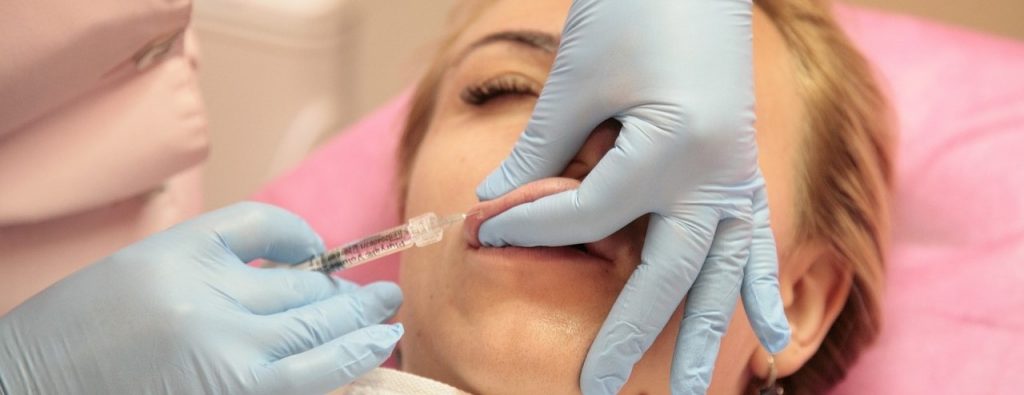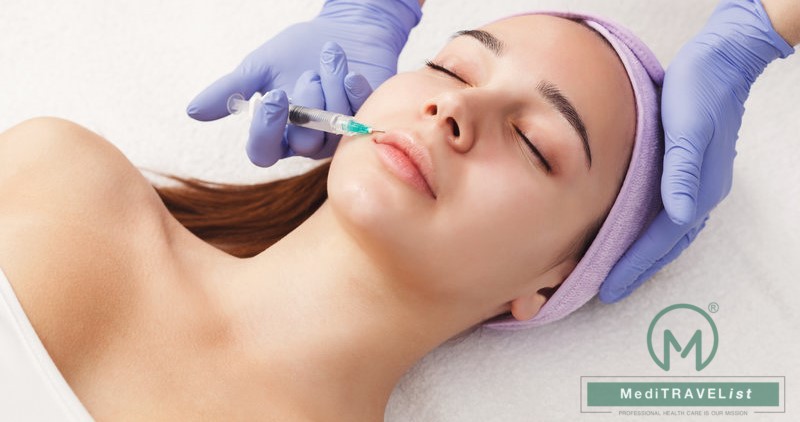In recent years, the interest in lip augmentation has increased in a fashion style.This interest is due to the fact that plump lips are not only a symbol of beauty but also one of the sine qua non of youth, attractiveness, fertility, sexiness and femininity.
The lips are one of the most important complementary elements of the face like the nose, and its fullness and fineness should be proportional to the other elements of the face.
Every woman may be a candidate for lip augmentation, but the procedures and risks associated with the procedures must be well known in order to achieve good results.
Lip augmentation is usually done by selecting one of the methods, such as injectable lip fillers, fat transfer and lip implants, depending on your condition and your allergic condition.

Lip implant surgery is performed under anaesthesia and if you have any medical history of allergy or previous complications, you should share this information with your doctor in order to prevent any negative situations. Lip implant surgery is relatively simple and usually lasts about an hour.
Lip implants provide more permanent augmentation than dermal lip fillers. Therefore, it is a good option for people with thin lips. Compared to other cosmetic procedures, the risk of complications such as implant rejection, implant migration, infection, scar on the lips and stiffness is relatively low.
However, these risks can be greatly reduced by an experienced surgeon.The most popular lip implant type is GORE-TEX®, SoftForm and AlloDerm®.
GORE-TEX® lip implant is a non-reactive polymer with micropores used in surgery for many years. This material is made of medical-grade ePTFE . This implant can give a bit of a hard feeling, but most patients adapt to this situation by time.
SoftForm lip implant is a soft-grade implant made of ePTFE. This implant, which has a tubular structure, adheres better to the tissue and reduces the likelihood of migration in the tissue, thus providing better tissue growth. Ultrasoft lip implants are three times softer than the conventional form.
AlloDerm® is a non-allergic, soft and flexible human tissue type lip implant made of donated skin, under strict FDA control.

Lip augmentation with injectable lip-fillers provides promising results in as little as a half-hour.
Unlike lip implant surgery, anaesthesia is typically not required for this procedure because the fillers usually contain topical anaesthesia.
However, the results obtained with injectable lip fillers are transient because the fillers eventually break down and are absorbed by the host tissue.
The duration of the results varies from individual to individual, but is usually 4-6 months. Similarly, the length of time the temporary fillers used to plump the thin lips depends on how long the components of these fillers can be degraded in your body.
Injectable lip fillers may be preferred by individuals who consider lip implants for permanent lip augmentation, to see if they can achieve the desired cosmetic benefit as a starting point.
If you have previously had lip enlargement with dermal filler in a different centre, you should tell the brand of the filling material to your new doctor. Because if a different filler material is to be used, the expected effect cannot be seen and negative situations may occur.
Injectable lip fillers vary widely, including collagen-based and hyaluronic acid-based lip fills. There are two forms of collagen-based fillers; bovine (contrary to Zyderm®andZyplast®, Artecoll® is a long-standing filler) and human (Dermalogen, Cymetra™, Autologen, Fascian™, Cosmoderm™ and Cosmoplast™) origin fillers.
Although an allergy test is required before treatment with bovine-derived collagen fillers against the possibility of any allergic reaction (3%) to bovine collagen, human-derived collagen fillers do not need any allergy test because of biocompatibility.
Hyaluronic acid is a clear, biodegradable substance that is naturally present in the joints and skin. Hyaluronic acid-based fillers (Restylane®, Perlane®, Radiesse® and Juvedérm®) are nonallergic and, due to their ability to bind to water molecules after being injected into the lips, will not only fill the lips but also cause them to moisturize. For this reason, longer-lasting plumping in the lips is obtained with hyaluronic acid-based fillers compared to collagen-based fillers.
Although the risk of complications related to lip fillers (redness, bruising, swelling, mild discomfort, tenderness and infection) is usually low, the reactions may vary depending on the type of selected filler and the ability of healing which varies from individual to individual. These complications can be minimized thanks to experienced doctors and appropriate treatments. Allergic reactions, which may be seen during the use of bovine-based lip fillers, occur rarely.

Lip augmentation with fat transfer is a great solution for patients who want plump lips but are reluctant to inject foreign substances into their bodies.
Lip enhancement made by transferring fat from your own tissues gives you soft and natural looking lips. Since the transferred fat has its own tissue, it is also very unlikely to be rejected as well as being non-allergic. Lip augmentation by fat transfer is typically performed under local anaesthesia or mild general anaesthesia depending on the surgeon’s and patient’s preferences.
Although the complications that can be seen after lip enlargement with fat transfer are extremely low, infection, bleeding, swelling and minor discomforts can be seen in the areas where the fat is removed and / or where the injection is applied (lips).

The healing process in lip augmentation varies depending on the preferred method. The lip augmentation with fat transfer or injectable lip fillers generally requires a day’s rest for recovery before patients can return to normal activities.
The lip augmentation procedure with lip implant takes longer compared to other methods and the healing process is longer and usually lasts 1-2 weeks.
The sutures placed outside the mouth are removed about 10 days after the surgery. Stitches in the mouth dissolve at approximately the same time. Patients may feel their lips numb during this healing process and lips may remain stiff for up to 3 months after the procedure.
If you cannot decide which method is appropriate for you, you can visit our website and reach us easily through our social media tools.

